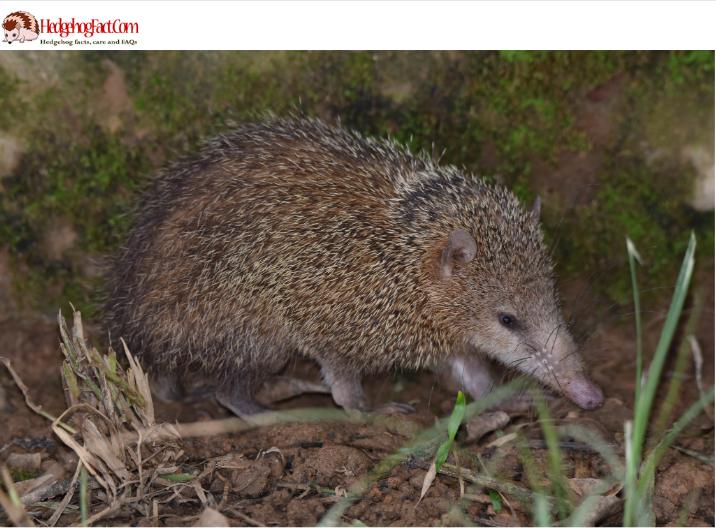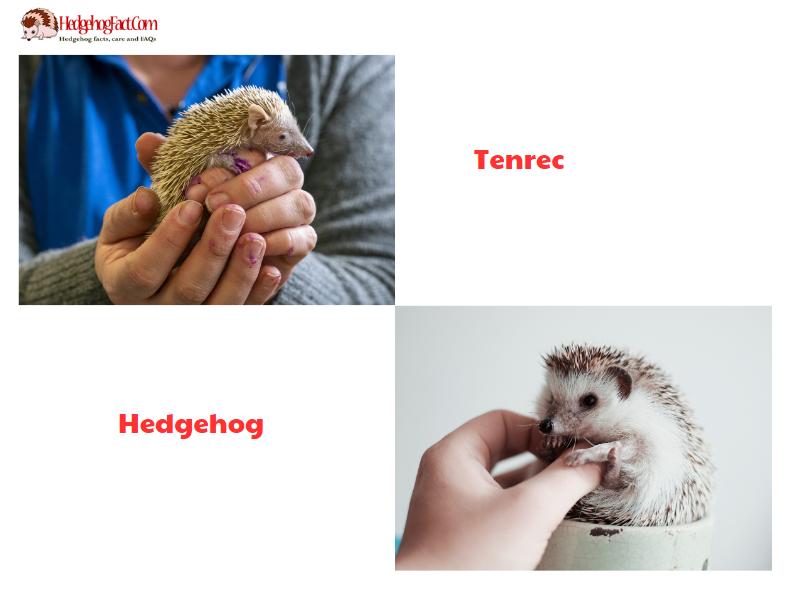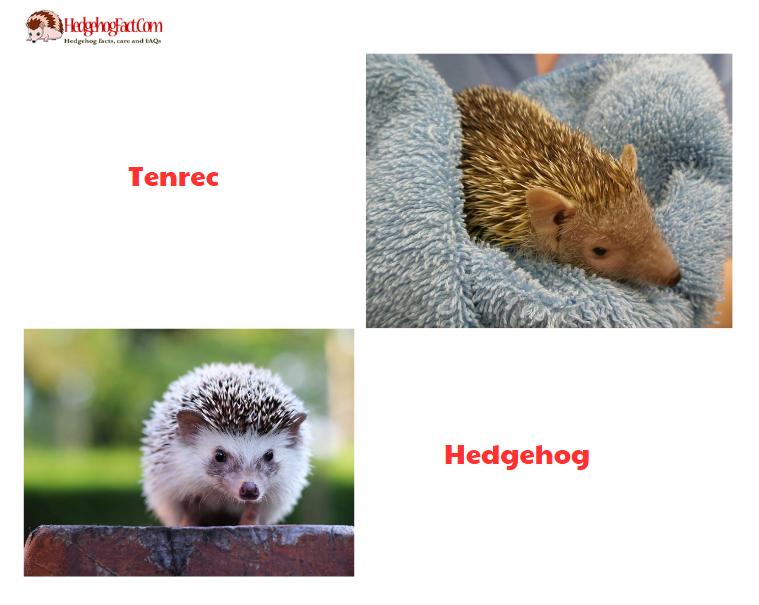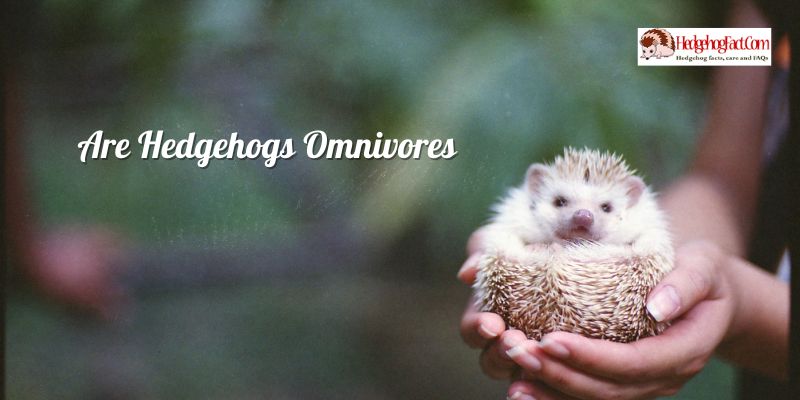Are you considering getting a tenrec or a hedgehog as a pet, but aren’t sure which one to choose? While both animals are often compared due to their similar appearances, there are some key differences in their physical characteristics and behaviors. In this article, Hedgehogfact.com will explore the Tenrec vs Hedgehog: Differences in Appearance and Behavior, including their size, snout shape, legs and toes, and behavior, to help you make an informed decision.
Size
In fact, tenrecs are often smaller than hedgehogs, with the majority of species’ average lengths ranging between 5.5 and 7 inches. But, as you pointed out, the Greater Madagascar tenrec can reach lengths of 6 to 9 inches, not counting the tiny tail. Much smaller than that, with a body the size of a kitten and a sturdy build, is the Lesser Madagascar tenrec.

It’s important to keep in mind that tenrecs and hedgehogs are very different creatures despite having a similar appearance. Tenrecs are exclusively found in Madagascar and are more related to hedgehogs and shrews than to moles. Hedgehogs, on the other hand, are members of the Erinaceidae family and can be found in Europe, Asia, and Africa.
Both species of animals have spines, but hedgehog spines are stronger and more stiff than those of tenrecs, which are more flexible and hair-like. Tenrecs also consume a greater variety of foods than hedgehogs, which are mostly insectivores.
Snout Shape
One of the most obvious differences between hedgehogs and tenrecs is the shape of their snouts. Tenrecs, as you indicated, have a long, narrow nose that resembles a rat, whereas hedgehogs have a short, broad snout. Tenrecs typically have a face that is longer and more pointed than a hedgehog’s.
These two animals’ distinct feeding habits are reflected in their different nose shapes. Compared to hedgehogs, tenrecs may consume a greater variety of foods, including insects, small vertebrates, fruits, and even nectar.
Their long, slender snouts are perfect for reaching into small crevices and snatching food. Being largely insectivores, hedgehogs, on the other hand, use their short, wide snouts to probe around in the ground and leaf litter in search of prey.
Generally, tenrecs and hedgehogs appear similar at first glance, but their distinctive evolutionary histories and environmental adaptations are reflected in their diverse snout forms and feeding behaviors.
Legs and Toes
Hedgehogs and tenrecs both have long, thin legs, but there are some variances in how many toes each paw has. In contrast to tenrecs, which have five toes on each paw, hedgehogs have four toes on their front paws and five on their back foot.

Tenrecs and hedgehogs have different structures for their legs and feet in addition to having a different number of toes. Tenrecs tend to have skinnier legs than hedgehogs, as you indicated. This might be due to the fact that tenrecs need to be able to maneuver through dense vegetation and are more agile climbers than hedgehogs.
Tenrecs can hold onto branches and other objects because their feet are more flexible than hedgehogs’. Overall, the distinctions between tenrecs and hedgehogs in their leg form and number of toes show how each species has evolved to suit its particular environment and way of existence.
Behavior
Because they are predominantly nocturnal creatures, hedgehogs are most active at night. When threatened, they have a built-in propensity to ball themselves up tightly to defend themselves from predators. This behavior, referred described as “balling up,” makes hedgehogs more elusive to predators. The hedgehog may uncurl and launch a tooth-and-claw attack if it believes it cannot flee from a threat.
On the other hand, tenrecs are active both during the day and at night. They are not as easily able to curl into a ball as hedgehogs, nor do they have as many or as sharp of spines. Tenrecs use their speed and agility to flee from predators instead. A tenrec may bite or use its spines to defend itself if it feels threatened.
When threatened, hedgehogs are more prone to hiss and click their teeth in terms of vocalization. Potential predators are being warned that they are feeling threatened and may attack if the predator approaches too closely. Although tenrec vocalizations can be heard, they are typically quieter than hedgehog vocalizations.
Diet
Hedgehogs primarily consume insects and other invertebrates, which is known as an insectivores diet. They may find their meal by smelling around the ground thanks to their keen sense of smell. Hedgehogs are known to scavenge on carrion in addition to eating insects and small animals like frogs and lizards.

Hedgehogs kept in captivity are frequently fed commercial cat food along with insects and other sources of protein. Tenrecs, on the other hand, consume both plant and animal stuff as part of a more diversified diet.
While some tenrec species, like the smaller Madagascar tenrec, are omnivorous and consume a range of insects, fruits, and other plant materials, other tenrec species, like the greater Madagascar tenrec, feed solely on insects.
Even small vertebrate animals like frogs and fish have been found to be consumed by some tenrecs, including the web-footed tenrec. Tenrecs can consume nectar, pollen, fruit, insects, and other small creatures in the wild.
Conclusion
In conclusion, while tenrecs and hedgehogs may appear similar at first glance, they have many differences in their physical characteristics, behavior, and diet. Overall, the differences between tenrecs and hedgehogs reflect their unique adaptations to their respective environments and lifestyles. Despite their similarities, each species has its own set of physical and behavioral traits that make them distinct from one another.





